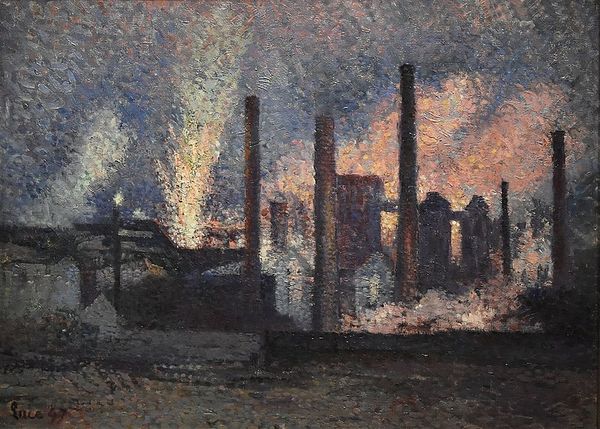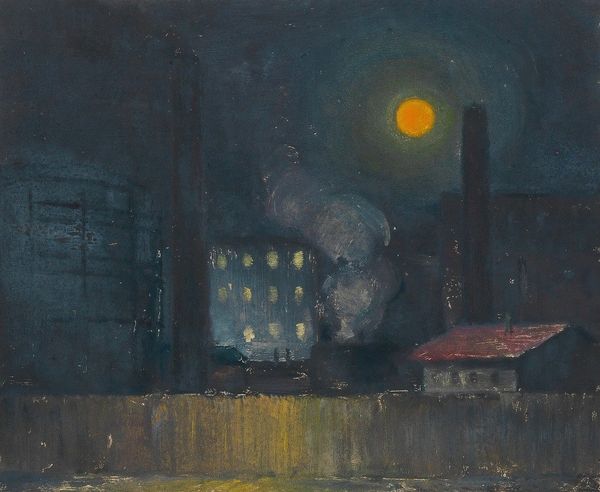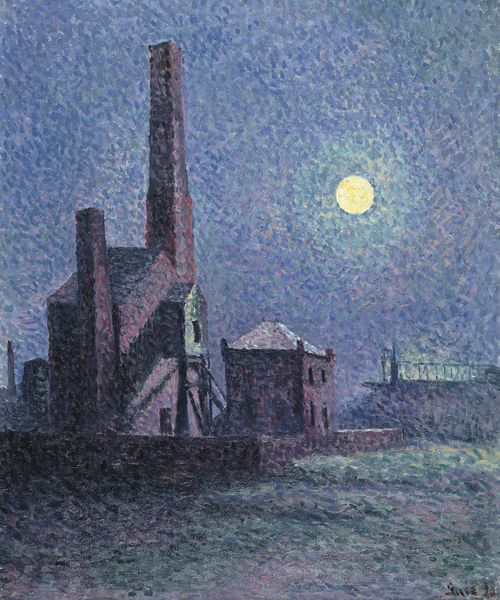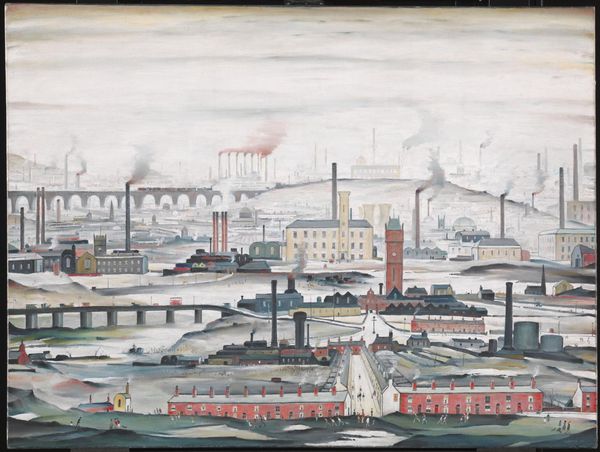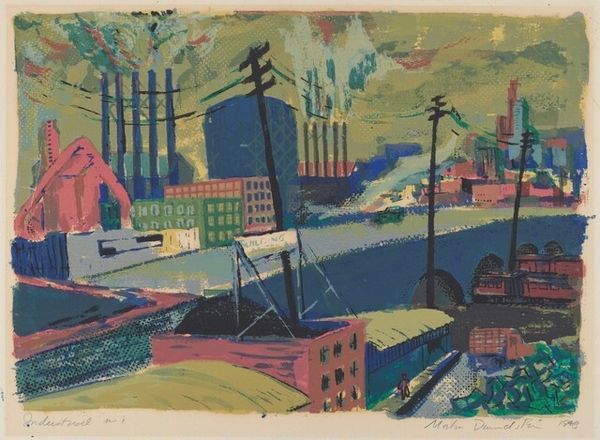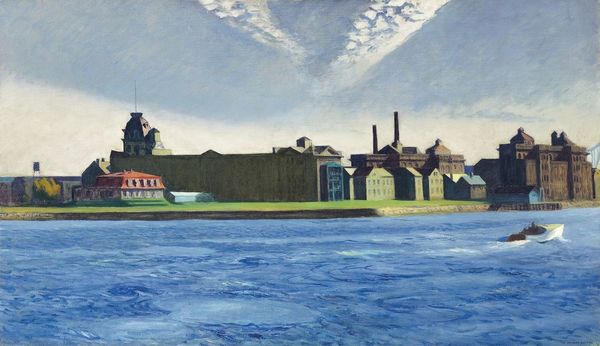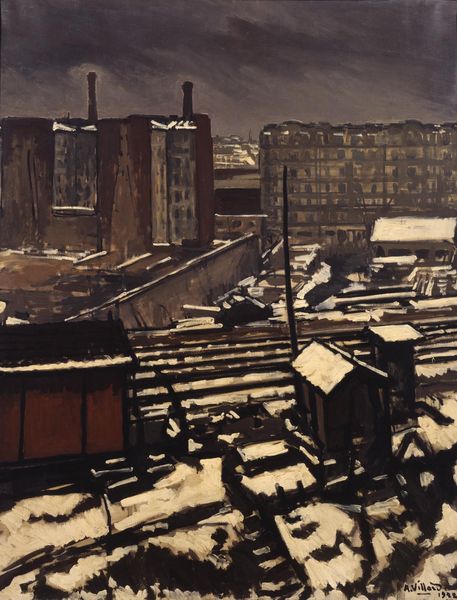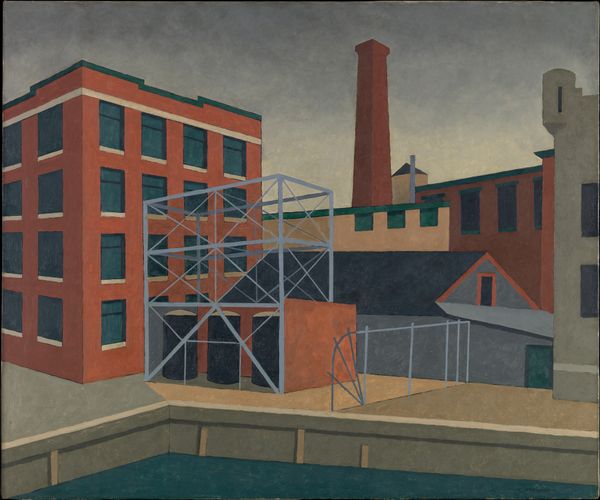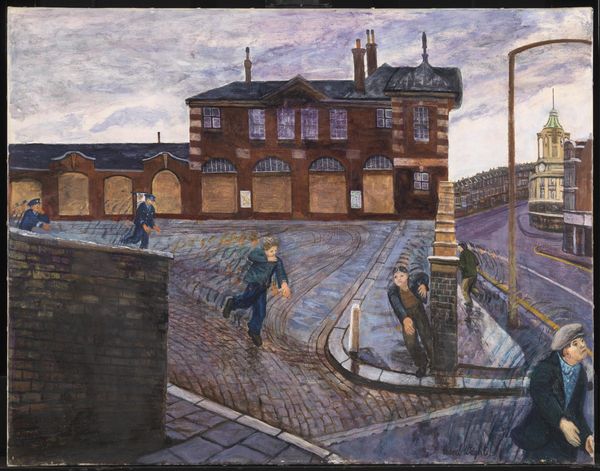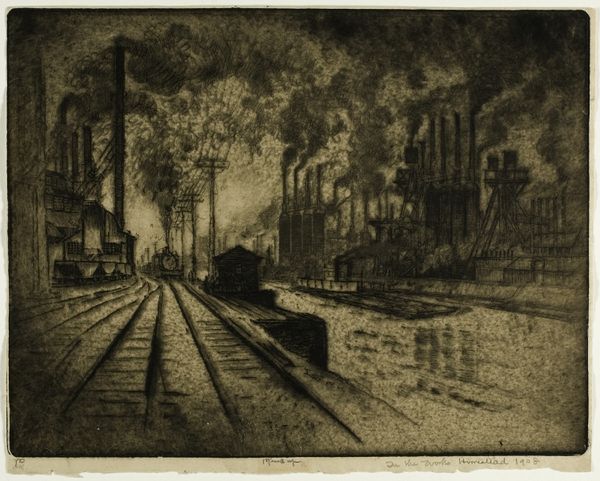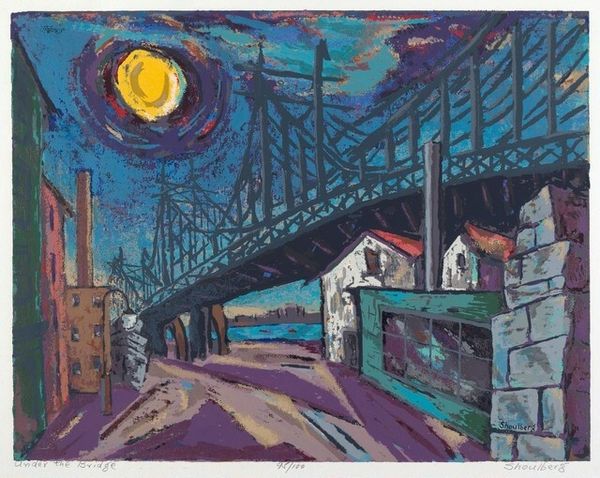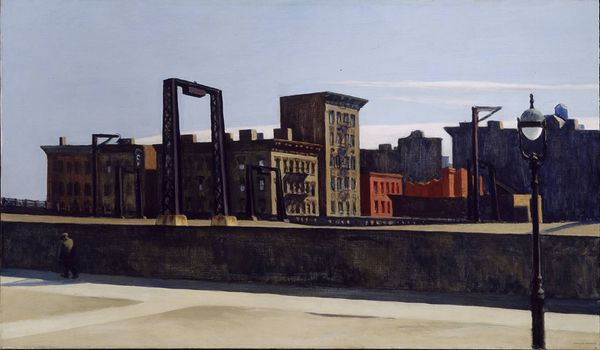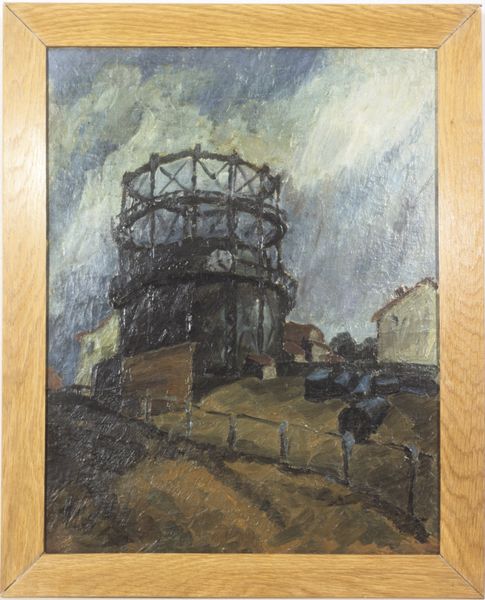
#
abstract expressionism
#
abstract painting
#
impressionist painting style
#
impressionist landscape
#
possibly oil pastel
#
oil painting
#
fluid art
#
acrylic on canvas
#
street graffiti
#
expressionist
Copyright: Public domain
Editor: So, this is Alfred William Finch's "Night View of a Factory," painted around 1910. It’s quite striking, almost like an industrial nocturne. I'm immediately drawn to how the bright yellow light emanating from the factory windows contrasts with the deep blues of the night sky. What aspects of the painting stand out to you? Curator: I see a representation deeply embedded in its socio-economic moment. Finch’s focus on the factory highlights the changing landscape of labor and production at the turn of the century. Consider the materials themselves: oil paint, industrially produced and readily available, used to depict a factory, a site of mass production and often, difficult labor conditions. Doesn’t it prompt questions about the means and implications of its making? Editor: That’s fascinating. I hadn’t considered the materials in that light. Do you think he was making a statement about industrialization itself? Curator: Perhaps, but not didactically. Instead, I think he’s offering a visual document of its reality. The blurred, almost hazy, brushstrokes mirror the ambiguity surrounding this rapid shift towards mechanized labor. Were working-class people exploited, finding better life or facing dehumanizing condition in mass factories. Note how the light is romanticized, but consider where that light comes from – likely burning fuel, driving industrial production. What do we, today, think of that light and that smoke coming from that one factory? Editor: So, by focusing on the material aspects, we can connect the art directly to broader social and historical issues? Curator: Precisely. It reveals a dialogue between art, labor, and consumption. By recognizing painting’s materiality as essential, and understanding its historical background, one can start thinking more critically about these transformations. Editor: This makes me consider art in a different way; now I will pay more attention to materials. Thank you! Curator: Indeed, now think beyond what's literally depicted; consider also how, and why it was created!
Comments
No comments
Be the first to comment and join the conversation on the ultimate creative platform.
